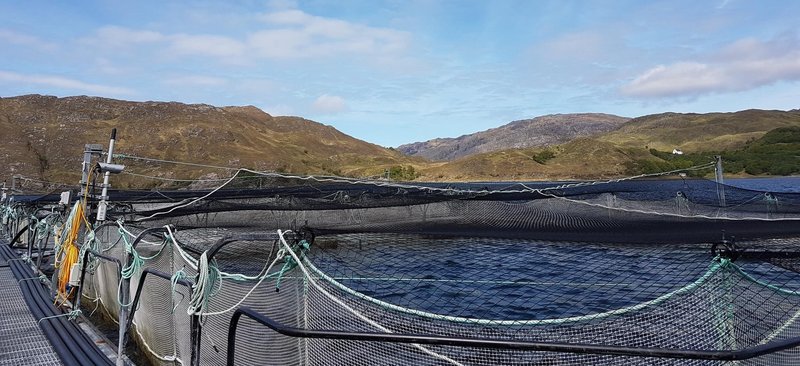Yield10 Bioscience is an agricultural bioscience company that is using its trait gene discovery platform to develop Camelina to produce land-based omega-3 DHA and EPA oils, among other products, targeting animal feed and human nutrition markets.
Why Camelina? Because it has a short growth cycle, making genetic changes in it is straightforward and the plant produces 35-40% oil in its seed. “We have been working with Camelina for several years now and have a pipeline of more than a dozen traits. We are working to deploy traits that will improve the agronomic performance as well as the yield of the crop and have also made excellent progress deploying herbicide tolerance traits and traits designed to increase oil content,” Dr. Oliver Peoples, CEO of Yield10 Bioscience, told Aquafeed.com in a recent interview.
Cooperation with the Rothamsted Institute
Camelina oil already contains ALA but does not naturally produce DHA or EPA. Rothamsted Research developed Camelina plants engineered to produce EPA or EPA plus DHA in their oil. “Based on the synergies with our work in Camelina and our goal to develop this as a platform crop for high-value seed products, we secured an exclusive option and collaboration with Rothamsted in 2020 to support Rothamsted's Flagship omega-3 oil Camelina Program,” Peoples explained.
“Under the agreement, Yield10 has supported Professor Johnathan Napier’s ongoing development of Camelina producing engineered Camelina to produce EPA alone or EPA and DHA combined. The Rothamsted team has conducted field trials of these plants and conducted fish feeding studies and human nutritional studies. In 2023, Yield10 is conducting seed scale-up and regulatory activities with engineered omega-3 Camelina,” Peoples said.
Camelina nutritional profile
The Camelina plants engineered with the omega-3 traits can be planted and harvested with standard farming equipment. The seed will be crushed, and the omega-3-containing oil will be separated and collected.
Peoples provided some examples of the composition. “The EPA-8 Camelina produces oil containing more than 25% EPA, while the DHA-1 Camelina produces 20% omega-3 oil composed of approximately 10% EPA and 10% EPA, which is similar to Northern Hemisphere fish oil.” Rothamstead is continuing its development work to engineer Camelina which will produce up to 30% omega-3 oil which would serve as a “drop-in replacement” for Southern Hemisphere fish oil.
“The advantage of the Camelina platform is that the omega-3s can be produced economically, and in a sustainable manner as compared to harvesting ocean-caught fish or making omega-3 via fermentation. Corbion and Veramaris production technologies rely on fermentation technologies which are energy-intensive and inefficient ways to convert corn or cane sugar to omega-3 products. Direct production in Camelina seed is very efficient, with sunlight and CO2 and is readily scaled by planting more acres at a much lower cost,” Peoples stated.
Aquafeed trials
Rothamsted carried out salmon farming trials in Scotland in collaboration with BioMar that showed that Camelina oil could readily substitute for fish oil in the fish diets. Rothamsted has run tests in other species such as trout, seabass, seabream and tuna, all of which showed the wide acceptability of this novel oil as an aquafeed ingredient and performed similarly to omega-3 extracted from ocean-caught fish.

Scottish salmon farm where large-scale feeding studies have been carried out over the whole production cycle. Credit: Johnathan Napier, Rothamsted Research
Camelina production
Rothamsted has run successful field trials of their omega-3 Camelina for a number of years in the UK, USA and Canada. In the U.S., Yield10 has filed a request for Regulatory Status Review (‘RSR’) with USDA-APHIS, to obtain regulatory approval which will enable commercial-scale production and the response is pending. The company plans to continue seed-scale-up activities with Camelina to produce EPA oil for business development uses.
“We currently plan to grow omega-3 Camelina in North America where there is a clear path to regulatory review and do not plan production in the EU due to the high barriers to growing engineered crops. We did notice that Norway recently allowed the use of a GMO-produced omega-3 in aquafeed which is very positive for the future of our omega-3 Camelina business. This is a step in the right direction to enable the use of high-quality sustainably produced omega-3 oil in the feed of farmed fish,” Peoples explained.
Growing Camelina offers other advantages according to Peoples. “Camelina is valuable because of its high technology upside potential, fast growth cycle and robust agronomics. Aside from producing fish oil alternatives, Camelina is also a better platform for producing omega-3 oils as an alternative to canola and soy because its seeds are easier to segregate from these major seed export crops during production, harvesting, and processing.”
Camelina not only provides oil. When the oil is extracted, the remainder, which is around 55% of the weight of the seed, is a high protein meal with about 42% protein content. This protein meal is already approved for use on a number of animal feed applications in the U.S. and Canada.
“The global demand for omega-3s continues to grow, not only for aquafeed but also in the nutrition and nutraceutical areas. At the same time, there is a growing and significant gap between the availability of fish oil with the most recent supply crisis resulting from the Peruvian government's decision to shut down the anchovy harvest. Peru produces the highest quality fish oil with the highest EPA and DHA content and supplies around 20% of global fish oil demand. This is having a serious impact on supply and pricing and we believe that we will be well-positioned to bring a high-quality oil to the market in the coming years,” Peoples concluded.










